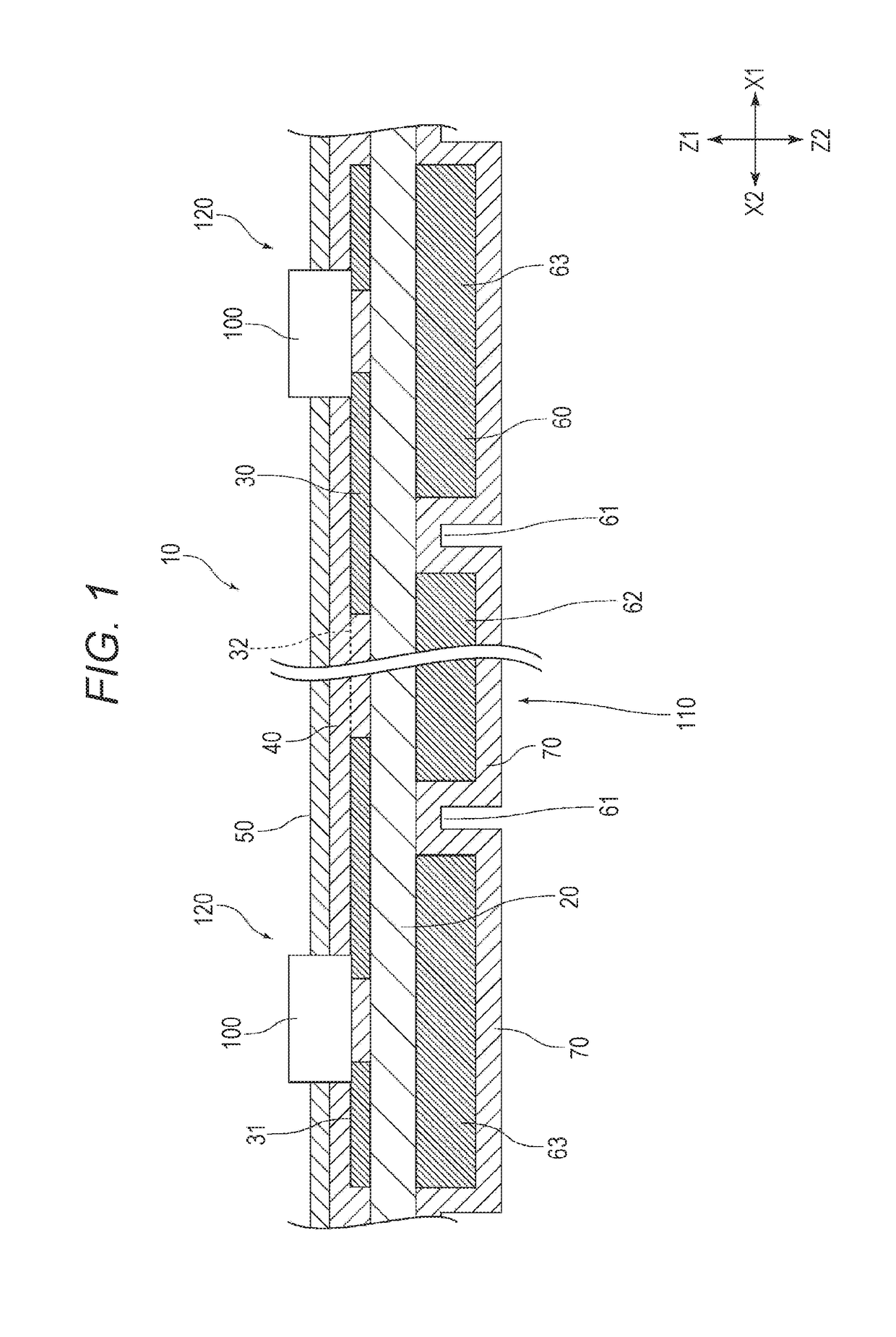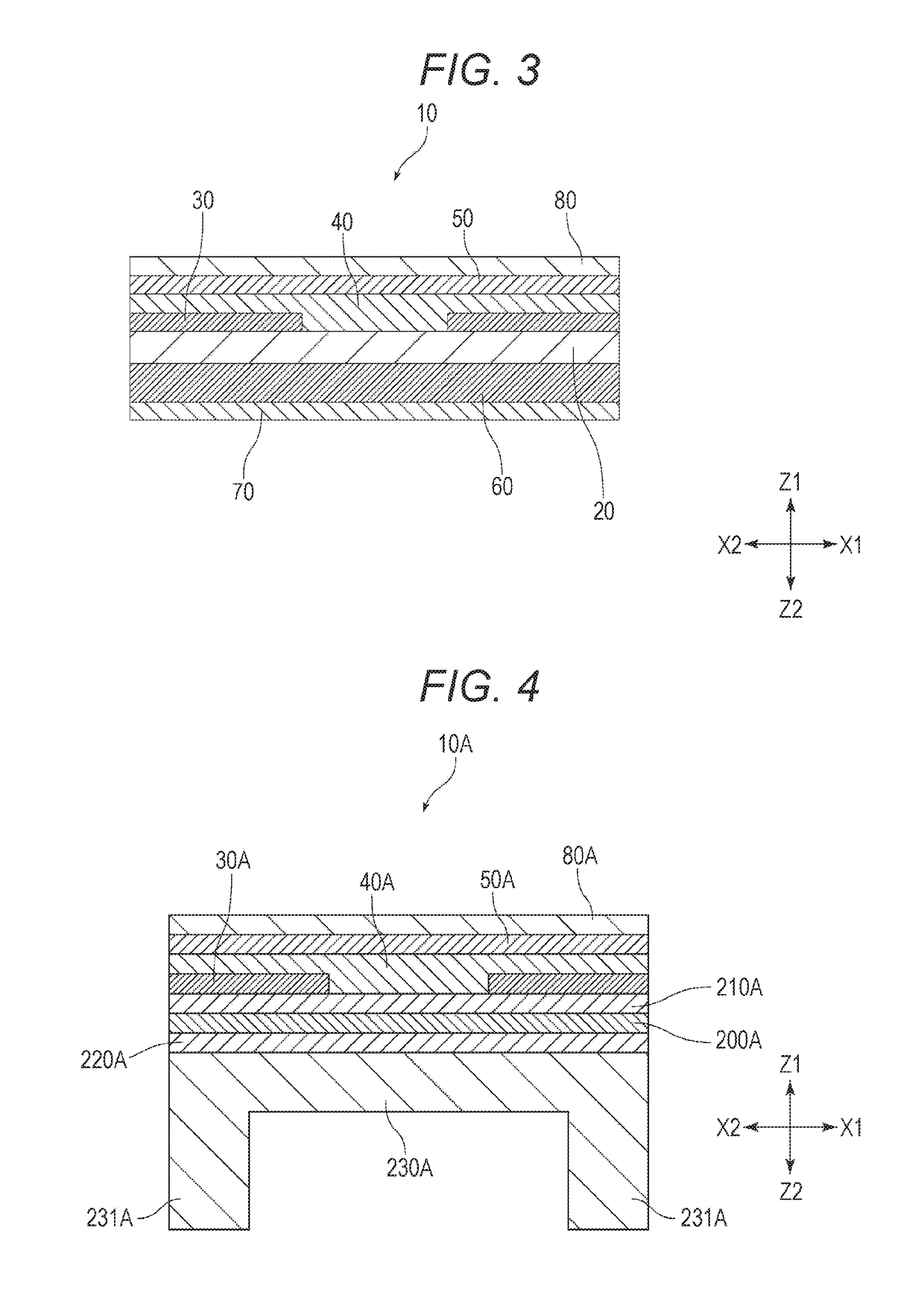Flexible printed board and method for manufacturing flexible printed board
- Summary
- Abstract
- Description
- Claims
- Application Information
AI Technical Summary
Benefits of technology
Problems solved by technology
Method used
Image
Examples
examples
[0061]Next, Examples of the present invention will be described.
(1) Evaluation of Heat Dissipation
[0062]Evaluation of the heat dissipation performance of the flexible printed board based on the above-described structure will be described. FIG. 3 is a side cross-sectional view showing the structure of the flexible printed board according to Example 1 and Example 2 used for evaluating the heat dissipation performance. In Example 1, the thickness of the thermally conductive resin layer 20 is 40 μm. For the thermally conductive resin layer 20, one having a thermal conductivity adjusted to 0.8 (W / mK) depending on a ratio and the like of the thermally conductive filler is used. Then, this is applied to the copper foil layer 30. The thickness of the copper foil layer 30 is 35 μm. The thickness of the adhesive material layer 40 varies depending on the portion, and is in a range of 18 to 28 μm.
[0063]In the cover material layer 50, the adhesive material having a thickness of 18 to 28 μm is ap...
PUM
| Property | Measurement | Unit |
|---|---|---|
| Fraction | aaaaa | aaaaa |
| Fraction | aaaaa | aaaaa |
| Thickness | aaaaa | aaaaa |
Abstract
Description
Claims
Application Information
 Login to View More
Login to View More - Generate Ideas
- Intellectual Property
- Life Sciences
- Materials
- Tech Scout
- Unparalleled Data Quality
- Higher Quality Content
- 60% Fewer Hallucinations
Browse by: Latest US Patents, China's latest patents, Technical Efficacy Thesaurus, Application Domain, Technology Topic, Popular Technical Reports.
© 2025 PatSnap. All rights reserved.Legal|Privacy policy|Modern Slavery Act Transparency Statement|Sitemap|About US| Contact US: help@patsnap.com



